Table of Contents
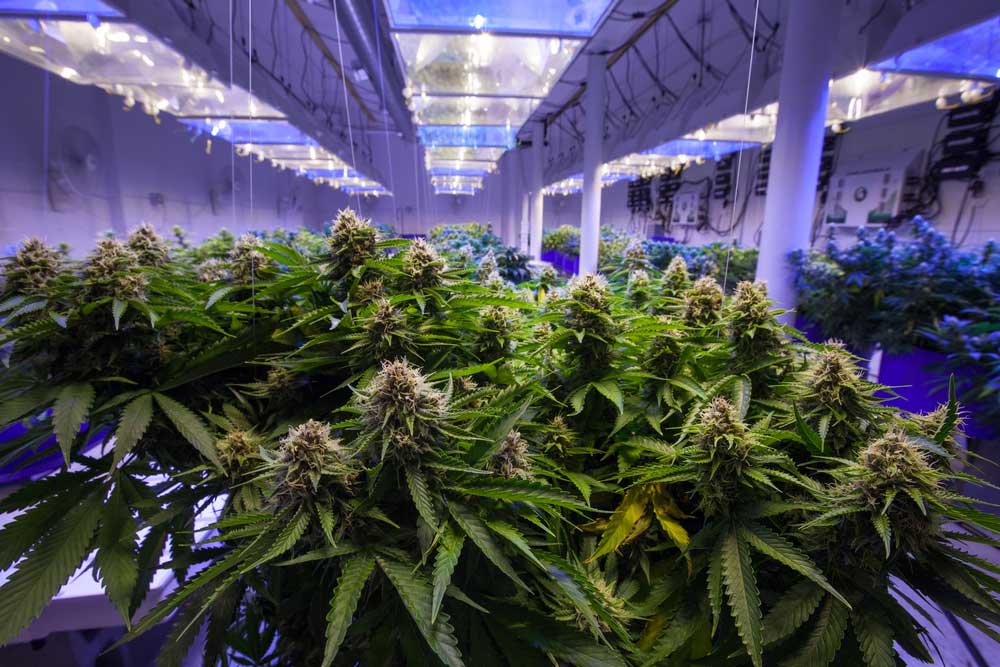
Plants like cannabis need to have a certain level of temperature to function properly. Temperature plays a huge role in a plant’s life in which dictates the rate of photosynthesis. While it is an important aspect of a plant’s life, it cannot produce its heat, unlike animals and humans. This is why growers should know and understand the importance of cannabis temperature during cultivation and how it can affect the overall quality of your plants.
During the process of photosynthesis, the plants will need to reach a certain level of temperature so the distribution of sugar would continue to flow. Low temperatures will often have these sugars stuck within a certain area of the plant and your crops will begin to suffer. Cannabis temperature is an important factor as it allows the plant to function properly. The low temperature will stunt the overall growth of the plant and you end up having low-quality results in the end.
Another reason why maintaining the right temperature is key to the success of your cop is to avoid issues such as spider mites, mildew formation, wilting, and nutrient burn. These incidents are more prevalent if the area is also humid.
Speaking of cannabis temperature, growing them at a certain temperature level can have a different effect on the plant’s overall growth. Temperatures below 15C or 60F tend to slow down the growth of the plant. The cold temperature would immediately kill the plant. However, certain cannabis strains thrive well in colder temperature but they often provide less yield than the ones that are grown at suitable temperatures.
Colder temperature also induces mold formation especially when the area is damp. When frost starts to melt in colder areas, unnecessary water begins to form around the plant. This is the perfect condition where molds begin to grow. One visible sign that your cannabis plant is reacting negatively to the cold temperature is when it starts to droop down.
Another reason why cold temperatures can harm your plant is that it can lead to over-purpling of the leaves. The shades of purple in your cannabis leaves do bring a certain level of aesthetics to the plant. However, beauty can only last long since too much purpling can lead to reduced photosynthesis. This can lead to stunted growth.
A plant that is left in colder areas will have lesser chances of growing to its full size than those that are grown under controlled cannabis temperature. Cannabis plants that are grown indoors are far more vulnerable to cold than those that are grown outside.
High temperatures also affect cannabis plants. When the temperature is too hot, it causes the plant to grow even more slowly than before. Temperatures beyond 80F or 26C will begin to slow down the growth of the plant and will cause the buds to loosen up. High temperatures can also reduce the potency and aroma of the buds as well as issues like root rot, wilting, and oxygen deprivation.
While other cannabis strains thrive in higher temperatures, it is best to monitor the development of the buds. Regular checkups of the quality of the buds will help determine whether your entire crop has been affected by such a change in temperature.
Temperature and humidity all play a major role in the development of cannabis plants. These factors are closely related to each other and can even resolve issues by fixing one with the other. Humidity refers to how much water or moisture is in the air. The relative humidity is measured by the moisture in the air at a certain temperature.
The relative humidity is vital to understanding growth and its connection to the temperature of the air surrounding your plants. This is highly noticeable especially when the area becomes dry or humid. When the air is hot and dry, the plants will tend to stretch out so it can release heat and reach out to a cooler area. If the air is too cold and humid, the plants will grow slowly and are more prone to molds and other issues.
Cannabis tends to respond differently to temperatures depending on the different stages of their life. Growers will need to ensure that the plants get the best temperature within their specific growing stage to promote proper development and high-quality results. These are some of the ideal temperatures for every stage of a plant’s life:
Seedlings tend to grow fast at this stage. This is why a slightly warmer temperature ranging from 70 to 80F or 20 to 30C with very low humidity is applicable at this stage. Giving the plants a cooler temperature during the dark period should help the proper development of branches and leaves at this stage.
This is the most crucial part of a cannabis’ life. Growers should be hitting the 80F or 26C mark throughout the flowering stage of the plant. Keeping the temperature lower will help the plant develop high-quality buds that produce the best terpenes and cannabinoids. Exposing the plants at a slightly colder temperature at night near the end of the flowering stage will also provide an even better result. Do note that a cooler temperature does not equate to exposing your plants to cold temperatures at night.
Higher temperatures at this stage of the plant’s lifespan could mean disaster for growers. The issue here is that high temperatures will slowly evaporate the natural substances found in the buds at this stage thus lowering the quality of your overall yield.
Grow lights are an important tool for proper cultivation especially within an indoor setup. However, this will also affect the overall temperature of the grow room and can even pose a concern for the plants as they tend to emit high amounts of heat when they are turned on. This is the reason why choosing the right grow light is key to the overall success of your production.
CFL grow lights are very common and are often purchased in your local general merchandise store. They emit low heat and are great for smaller grow rooms. If you plan on having bigger yields or a bigger grow room, you can purchase more CFL grow lights but it will begin to increase the temperature within the room.
HID grow lights are composed of High-Pressure Sodium, Metal Halide, and many other types. These grow lights tend to use a lot of electricity thus generate a lot of heat as well. While HID grows lights are more likely to consume the same amount of heat that is equal to the number of CFL grow lights. However, with HID, you get more coverage and most HID grow lights have a built-in cooling system.
In the end, getting the right grow light depends on the area of your grow room. Those who have a smaller grow room should be looking to get CFL grow lights while those with larger areas should get HID grow lights. This way, you limit the amount of heat produced by these grow lights which could ultimately dictate the growth of your cannabis plants.
Managing the temperature within a certain area is a tough balancing act. It is a very tricky process that requires certain finesse and understanding of what is happening within the grow room. Those who struggle with controlling the temperature will need to do the following:
1. If the area begins to feel hot, make sure that you have a good exhaust fan to pull the hot air from the area and into the area outside. This should normally fix any issues regarding warmer temperatures within your grow room.
2. Improve air circulation by installing fans in key areas of the grow room. Poor air circulation would lead to hot spots that damage the plants in that area. Fans should be pointed away from the plant and avoid facing it directly to the plants especially to the stems where the plants could start swaying. This may lead to breakage. It is much better to point the fan directly to a wall and allow the air to bounce from the wall and into the plants.
3. Grow heat-resistant strains. Choose cannabis strains that are known to withstand sudden changes in temperature to ensure that they can still grow and mature properly even with the unstable conditions within your grow room or your outdoor farm.
4. Switch your lighting schedules to turning the grow lights at night and turn them off during the day. This way, you provide a warmer temperature at night when it is normally colder and provide less heat during the day when it is the warmest.
Finding the right cannabis temperature is imperative as a grower if you want to produce high-quality buds in the long run. Remember that certain strains can withstand a perfect condition while others can thrive in cooler settings. Knowing how to control the temperature within a certain setup is key to the proper growth of your cannabis plants.
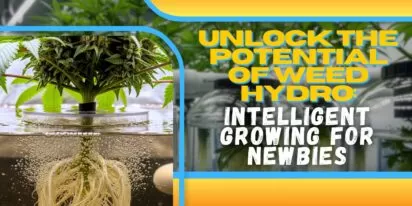
Curious about growing weed in a healthy, effective way? Welcome to the realm of weed hydro! This method uses water instead of soil, delivering n
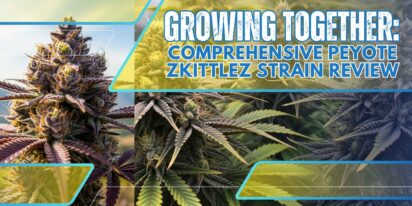
Peyote Zkittlez is a unique cannabis strain that has quickly gained dedicated followers among enthusiasts and patients alike. Its parentage—Zk
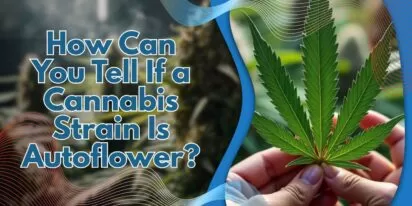
As growers, we want strains that work well, are strong, and are of good quality. Autoflowering cannabis strains are a big step forward for both
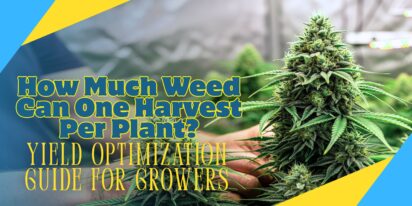
Pot growers always ask the same basic question: How much weed does a weed plant produce? The answer is complex and depends on a multitude of var

Ever had the room spin after a few hits? You're not alone. Figuring out how to prevent getting dizzy high can make your cannabis experience a wh
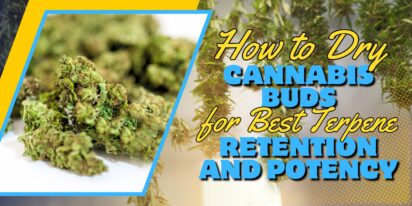
Drying cannabis properly is a critical process in preserving the plant's full aroma and flavor and its psychoactive abilities. Tampering with th

Ever caught yourself a bit too high and all of a sudden in need of being normal? Whether you're heading out for munchies or bumping into someone

Looking for sage advice on how not to get pinched with weed without batting an eye? Attempting to protect your stash from gossipy roommates, sno
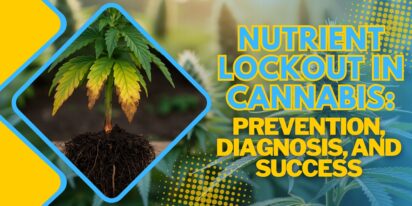
Nutrient lockout, also known as nutrient binding or chemical antagonism, is a significant issue in cannabis cultivation that negatively impacts
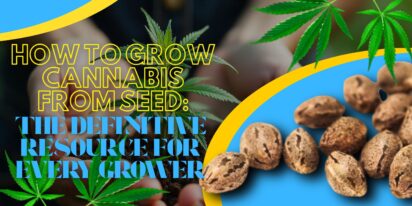
Germination is the most critical initial stage in growing healthy, high-quality cannabis plants. During germination, the dormant seed becomes a
Are You 18 Or Over?
By selecting “Continue”, you confirm that you are at least 18 years of age and legally permitted to access cannabis related content in your region.
By using Rocketseeds.com, you agree to our legal disclaimer.
Excellent blog here Also your website loads up very fast What web host are you using Can I get your affiliate link to your host I wish my web site loaded up as quickly as yours lol
Your writing is not only informative but also incredibly inspiring. You have a knack for sparking curiosity and encouraging critical thinking. Thank you for being such a positive influence!
Simply wish to say your article is as amazing The clearness in your post is just nice and i could assume youre an expert on this subject Well with your permission let me to grab your feed to keep updated with forthcoming post Thanks a million and please carry on the gratifying work
Somebody essentially lend a hand to make significantly articles Id state That is the very first time I frequented your website page and up to now I surprised with the research you made to make this actual submit amazing Wonderful task
Your blog is a beacon of light in the often murky waters of online content. Your thoughtful analysis and insightful commentary never fail to leave a lasting impression. Keep up the amazing work!
Thank you for the auspicious writeup It in fact was a amusement account it Look advanced to more added agreeable from you By the way how could we communicate
Your blog is a constant source of inspiration for me. Your passion for your subject matter shines through in every post, and it’s clear that you genuinely care about making a positive impact on your readers.
Your blog is a constant source of inspiration for me. Your passion for your subject matter is palpable, and it’s clear that you pour your heart and soul into every post. Keep up the incredible work!
Your articles never fail to captivate me. Each one is a testament to your expertise and dedication to your craft. Thank you for sharing your wisdom with the world.
Your blog is a testament to your dedication to your craft. Your commitment to excellence is evident in every aspect of your writing. Thank you for being such a positive influence in the online community.
Your writing has a way of resonating with me on a deep level. I appreciate the honesty and authenticity you bring to every post. Thank you for sharing your journey with us.
Your blog is a true gem in the world of online content. I’m continually impressed by the depth of your research and the clarity of your writing. Thank you for sharing your wisdom with us.
Hi i think that i saw you visited my web site thus i came to Return the favore Im attempting to find things to enhance my siteI suppose its ok to use a few of your ideas
Somebody essentially help to make significantly articles Id state This is the first time I frequented your web page and up to now I surprised with the research you made to make this actual post incredible Fantastic job
Usually I do not read article on blogs however I would like to say that this writeup very compelled me to take a look at and do so Your writing taste has been amazed me Thanks quite nice post
Your blog has quickly become one of my favorites. Your writing is both insightful and thought-provoking, and I always come away from your posts feeling inspired. Keep up the phenomenal work!
Every time I visit your website, I’m greeted with thought-provoking content and impeccable writing. You truly have a gift for articulating complex ideas in a clear and engaging manner.
Hey there You have done a fantastic job I will certainly digg it and personally recommend to my friends Im confident theyll be benefited from this site
I have read some excellent stuff here Definitely value bookmarking for revisiting I wonder how much effort you put to make the sort of excellent informative website
Nice blog here Also your site loads up very fast What host are you using Can I get your affiliate link to your host I wish my site loaded up as quickly as yours lol
What i do not understood is in truth how you are not actually a lot more smartlyliked than you may be now You are very intelligent You realize therefore significantly in the case of this topic produced me individually imagine it from numerous numerous angles Its like men and women dont seem to be fascinated until it is one thing to do with Woman gaga Your own stuffs nice All the time care for it up
Your blog is a beacon of light in the often murky waters of online content. Your thoughtful analysis and insightful commentary never fail to leave a lasting impression. Keep up the amazing work!
Your blog is a breath of fresh air in the often stagnant world of online content. Your thoughtful analysis and insightful commentary never fail to leave a lasting impression. Thank you for sharing your wisdom with us.
Your blog is a beacon of light in the often murky waters of online content. Your thoughtful analysis and insightful commentary never fail to leave a lasting impression. Keep up the amazing work!
Usually I do not read article on blogs however I would like to say that this writeup very compelled me to take a look at and do it Your writing style has been amazed me Thank you very nice article
Your writing has a way of resonating with me on a deep level. I appreciate the honesty and authenticity you bring to every post. Thank you for sharing your journey with us.
This hydroponics guide is quite the buzz, seriously! Who knew growing weed without dirt could be so complicated yet potentially rewarding? The breakdown of systems like DWC and NFT is helpful, though I suspect my cat might confuse the air pump for a toy. The idea of cleaner buds is tempting, especially since explaining hydro weed to my non-growing friends might get messy. And the bit about potential dizziness from hydro weed? Perfect, now I have an excuse for why I always stumble a bit after a grow session. Still, the promise of faster grows and higher yields is hard to ignore, even if it means more trips to the pH meter than to the coffee shop. Overall, a cultivating read for the curious grower!